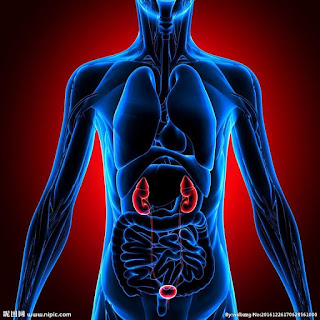Three Categories of Acute Renal Failure
Acute renal failure occurs in 5 percent of hospitalized patients. Etiologically, this common condition can be categorized as prerenal, intrinsic or postrenal. Most patients have pre-renal acute renal failure or acute tubular necrosis (a type of intrinsic acute renal failure that is usually caused by ischemia or toxins). Once acute renal failure develops, supportive therapy is critical to maintain fluid and electrolyte balances, minimize nitrogenous waste production and sustain nutrition. Death is most often caused by infection or cardiorespiratory complications.
Prerenal Acute Renal Failure
In prerenal acute renal failure, the problem is impaired renal blood flow as a result of true intravascular depletion, decreased effective circulating volume to the kidneys or agents that impair renal blood flow.
Urine and blood studies are helpful in diagnosing prerenal acute renal failure. Distinguishing features include a bland urine sediment, a urine osmolality of greater than 500 mOsm and a BUN–to–serum creatinine ratio of greater than 20:1
In patients with prerenal acute renal failure, the parenchyma is undamaged, and the kidneys respond as if volume depletion has occurred. Thus, the kidneys avidly reabsorb sodium in order to reabsorb water.
Intrinsic Acute Renal Failure
Intrinsic acute renal failure is subdivided into four categories: tubular disease, glomerular disease, vascular disease and interstitial disease. In intrinsic acute renal failure, the renal parenchyma is injured. The damage to tubule cells leads to certain urine microscopic findings. Parenchymal injury causes impaired sodium reabsorption and results in a fractional excretion of sodium of greater than 3 percent and an isotonic urine osmolality of 250 to 300 mOsm.
Postrenal Acute Renal Failure
Postrenal acute renal failure can only occur if both urinary outflow tracts are obstructed or the outflow tract of a solitary kidney is obstructed. The condition is most often due to obstruction of the lower urinary tract.
Patients with severe oliguria or anuria (output of less than 100 mL of urine per day) are likely to have postrenal acute renal failure. However, not all patients with postrenal acute renal failure are oliguric.
In patients with postrenal acute renal failure, treatment efforts are directed at the underlying disease. Treatments available for various causes include bladder catheterization, percutaneous nephrostomy, lithotripsy, ureteral stenting and urethral stenting.
Over the past 40 years, the survival rate for acute renal failure has not improved, primarily because affected patients are now older and have more comorbid conditions. Infection accounts for 75 percent of deaths in patients with acute renal failure, and cardiorespiratory complications are the second most common cause of death. Depending on the severity of renal failure, the mortality rate can range from 7 percent to as high as 80 percent.
If you have suffered from these kinds of uncomfort, and been diagnosed with PKD, we're here to help. Email us: doctorbruceonline@gmail.com (Monday through Sunday) to make an appointment.




评论
发表评论